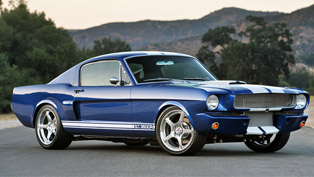Red-Hot Torture: New Ecoboost Engine’S Turbochargers Glow In Durability Testing
It's difficult to get the twin turbochargers in the new Ford EcoBoost V-6 engine too hot under the collar. Not that Ford engineers didn't try.
Working to ensure the long-life reliability of the dual-turbo, direct-injected engine, Ford put the new engine through a barrage of torture testing.
One of the key areas of testing focused on the two turbos – key weapons in the EcoBoost strategy to deliver the performance of a V-8 with the fuel economy of a V-6. Would their reliability match the rest of the robust engine architecture, based on Ford's proven 3.5-liter V-6 engine?
"The answer is yes," says Michael Shelby, EcoBoost engine development leader. "We put the EcoBoost V-6 through the same extensive durability signoff testing as any Ford gasoline engines, and we went beyond it to validate the EcoBoost water-cooled turbocharger design and air-to-air intercooling strategy."
The EcoBoost system is part of Ford Motor Company's commitment to deliver the best fuel economy in each new vehicle, with at least three more additions for the 2010 model year. The 2010 EcoBoost Flex, for example, boasts segment-leading fuel economy among full-size performance crossover vehicles, with 22 mpg highway and 18 mpg combined. The 2010 EcoBoost MKT also leads its segment in fuel economy, exceeding the V-8-powered Audi Q7 by 4 mpg highway. With its premium EcoBoost engine, the new Lincoln MKS will deliver more power and better highway efficiency (25 mpg) than the 2009 Lexus GS460 (24 mpg) or 2009 Infiniti M45 (21 mpg).
Engine Dynamometer ‘Torture Chamber' Going beyond the normal test protocol meant ramping up the boost to the maximum in special Ford engine dynamometers. These dedicated test cells allow engineers to operate the engine exactly as it would operate in a vehicle.
"The idea is to run the engine through a very difficult testing regimen at its maximum-rated operating performance," Shelby explained. "That's when things get hot."
Once the EcoBoost engine was installed in the dynamometer, operators increased rpm to full boost operation.
This meant the turbos were running flat out at incredibly high temperatures. "That's beyond red hot," Shelby says. "They're orange hot."
Reliable to the Extreme Turbochargers operate at high speed – up to 170,000 rpm – and under intense temperatures of up to 950 degrees Celsius (1,740 degrees Fahrenheit). Some previous-generation turbos were reputed to suffer from oil coking, in which they would bake their lubricating oil. Because oil coking can lead to premature turbocharger bearing failures, Ford's advanced engine engineers specified the use of new, water-cooled turbochargers to combat this problem.
"During normal turbo operation, the turbo receives most of its bearing cooling through oil," said Keith Plagens, turbo system engineer. "After shut down, the problems with turbos in the past were you would get coking in the center bearing. Oil would collect in the bearings, the heat soaks in and the oil would start to coke on the side and foul the bearing. Water cooling – used in the EcoBoost engine – eliminates that worry."
The new EcoBoost V-6 uses two Honeywell GT15 water-cooled turbos.
"The EcoBoost engine uses passive thermal siphoning for water cooling," Plagens explains. "During normal engine operation, the engine's water pump cycles coolant through the center bearing. After engine shutdown renders the water pump inactive, the coolant flow reverses. Coolant heats up and flows away from the turbocharger water jacket, pulling fresh, cool coolant in behind. This highly effective coolant process is completely silent to the driver, continuing to protect the turbocharger."
Going for a Spin - Flat Out To validate their water-cooled turbo design choice, Ford engineers put EcoBoost through a special turbocharger test.
The test ran EcoBoost at maximum boost flat out for a 10-minute period. Then the engine and all cooling were abruptly shut down and the turbo was left to "bake" after this high-speed operation. If that sounds severe, imagine repeating this cycle 1,500 times without an oil change. That's what EcoBoost's turbos endured.
After 1,500 cycles, the turbos were cut open for detailed technical examination. The turbos passed the severe test with flying colors.
"We've attained things here the customer would never be able to do in their vehicle," Plagens said. "Ten minutes of peak power (355 hp, 350 foot-pounds of torque) is something that's probably only achievable in a vehicle for fractions of a minute, 10 seconds maybe in the extreme. We run it for 10 minutes many, many times over, and that's far, far more harsh and severe than a vehicle test would be."
EcoBoost also endured Ford's standard engine durability test signoff. Back in the dynamometer lab, the 3.5-liter EcoBoost V-6 went back up to full revs – and maximum turbo boost – for a real endurance test. This time the duration was a bit longer – 362 hours at full throttle. That's like running the 24 Hours of Daytona for more than 15 days straight.
Other tests subjected EcoBoost to a grueling range of operating temperatures.
"We run all of our durability testing at the maximum temperature," Plagens said. "For the turbos, the test is 150 hours long. Every 10 minutes the test alternates between peak power at max exhaust temperature and completely cold motoring. The goal is to verify that the turbochargers can withstand extreme thermal cycling without affecting their performance. It's pretty brutal and extreme but it's important to prove out durability."
Making the Grade As the first Ford EcoBoost engine makes its production debut, it has earned its stripes in Ford's engine boot camp. It uses that same grade of 5W20 engine oil specified by Ford for gasoline engines, and oil changes are scheduled at the same 7,500-mile intervals, too.
"Ford customers can be sure that their new EcoBoost engine requires no special treatment for its reliable operation," Shelby said. "EcoBoost owners can pull in their driveways and switch off just like any other engine, and there's no special oil or shorter oil-change intervals. That means the owner can concentrate on enjoying the great performance and fuel economy."
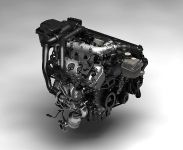
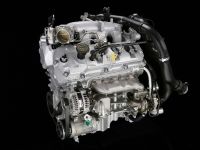
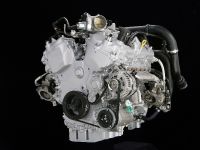
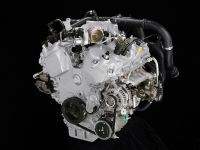
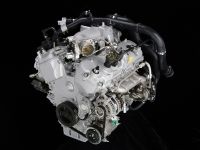
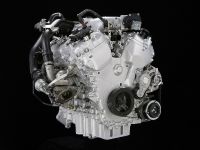
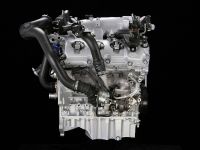
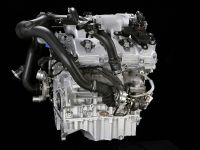

![2014 Engine of the Year - Results [images]](http://www.automobilesreview.com/uploads/2014/06/2014-Engine-of-the-Year-b.jpg)
